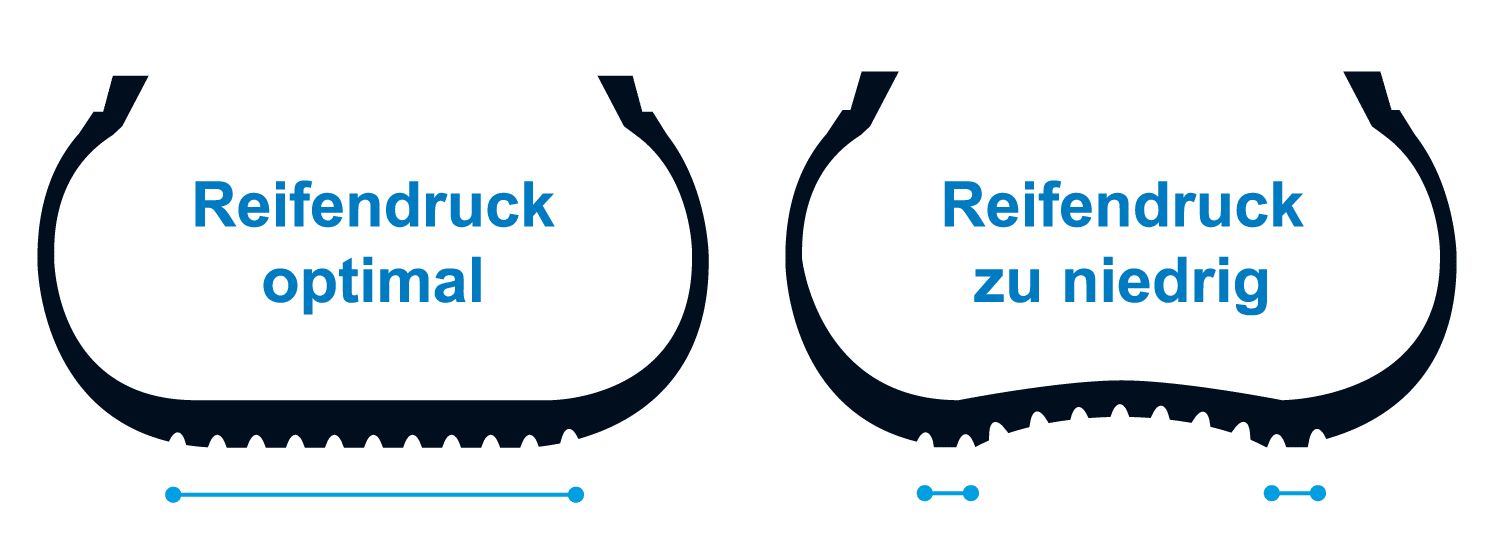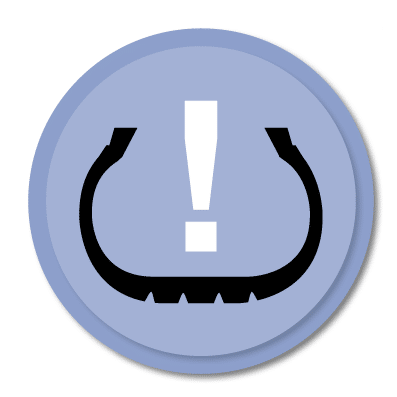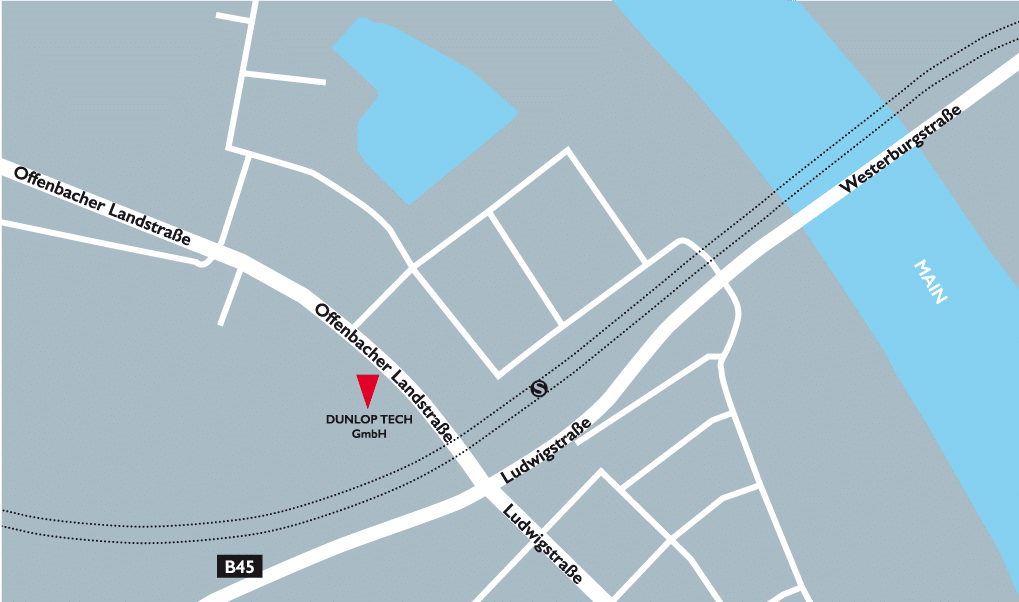Tire Pressure
Monitoring System
Warning signals for loss of air pressure ...
… that is what tire pressure warning systems send automatically when they detect a loss of pressure. An important assistance function for the driver. Because only with the correct air pressure, the tire rolls optimally on the road surface, can fully develop its performance potential and thus make its contribution to driving safety. If the tire sinks in the area of the contact patch due to insufficient air pressure, it is not only its performance that suffers. Also its rolling resistance and thus the fuel consumption and CO2 emissions of the vehicle are negatively affected.

If the tire pressure is too low, the tire has no ground contact in the center of its tread and runs on its outer shoulders. As a result, the tire loses performance, and there may be a decrease in driving stability, poor handling, longer braking distances, and poorer aquaplaning characteristics. In addition, rolling resistance and fuel consumption are increased, while at the same time shortening the service life of the tire.

If the tire pressure is too low, the tire has no ground contact in the center of its tread and runs on its outer shoulders. As a result, the tire loses performance, and there may be a decrease in driving stability, poor handling, longer braking distances, and poorer aquaplaning characteristics. In addition, rolling resistance and fuel consumption are increased, while at the same time shortening the service life of the tire.
Tire Pressure Monitoring Systems provide more:
DRIVING SAFETY
ECONOMY
ENVIRONMENTAL PROTECTION

Software based system
The DUNLOP TECH Tire Pressure Monitoring System for passenger cars and light commercial vehicles is based on software that is integrated into the ABS/ESC control unit of the vehicle. The software accesses to already existing signals and determines a loss of air pressure indirectly based on changing tire characteristics: the rotational speed of the wheel and the natural frequency of the wheel-tire system, both of which vary as a function of the tire pressure. If a loss of air pressure is detected in one or more tires, the driver receives a warning signal in good time.
The unbeatable argument for indirectly measuring systems is that they use technology already present in the vehicle and thusno additional components are needed on the wheel. This results in numerous advantages.

Advantages of indirectly measuring warning systems
Indirect tire pressure warning systems do not require sensors on the tire and therefore do not generate any additional costs.
Indirectly measuring tire pressure warning systems do not require any components and associated resources, such as batteries. Thus they are absolutely maintenance-free and work reliably as long as the vehicle or its ABS/ESC system is functional.
Since indirect tire pressure warning systems are software-based and use technology already present in the vehicle, neither materials for production nor waste for disposal are an issue.
Therefore, the DUNLOP TECH Tire Pressure Monitoring System complies not only with legal requirements*, but also makes a significant contribution to driving safety, economy and environmental protection.
IMPORTANT: A Tire Pressure Monitoring System does not release the driver from his responsibility to set the air pressure correctly and to check it regularly.
* Tire Pressure Monitoring Systems (TPMS) are used worldwide to to maintain optimum air pressure and thus increase driving safety as well as reduce the burden on the environment. Already many countries have made Tire Pressure Monitoring Systems (e.g. USA, South Korea) mandatory or are preparing to introduce them. In Germany, according to European Regulation 661/2009, this has applied since November 01, 2012 to all newly type-approved vehicles and since November 01, 2014 to all newly registered vehicles. The TMPS obligation applies to M1 class vehicles for passenger transport with up to 8 seats (passenger car, SUV, van, off-road vehicles, motorhomes and minibuses). The DUNLOP TECH Tire Pressure Monitoring System complies with all existing international legal regulations and can be used worldwide accordingly.

